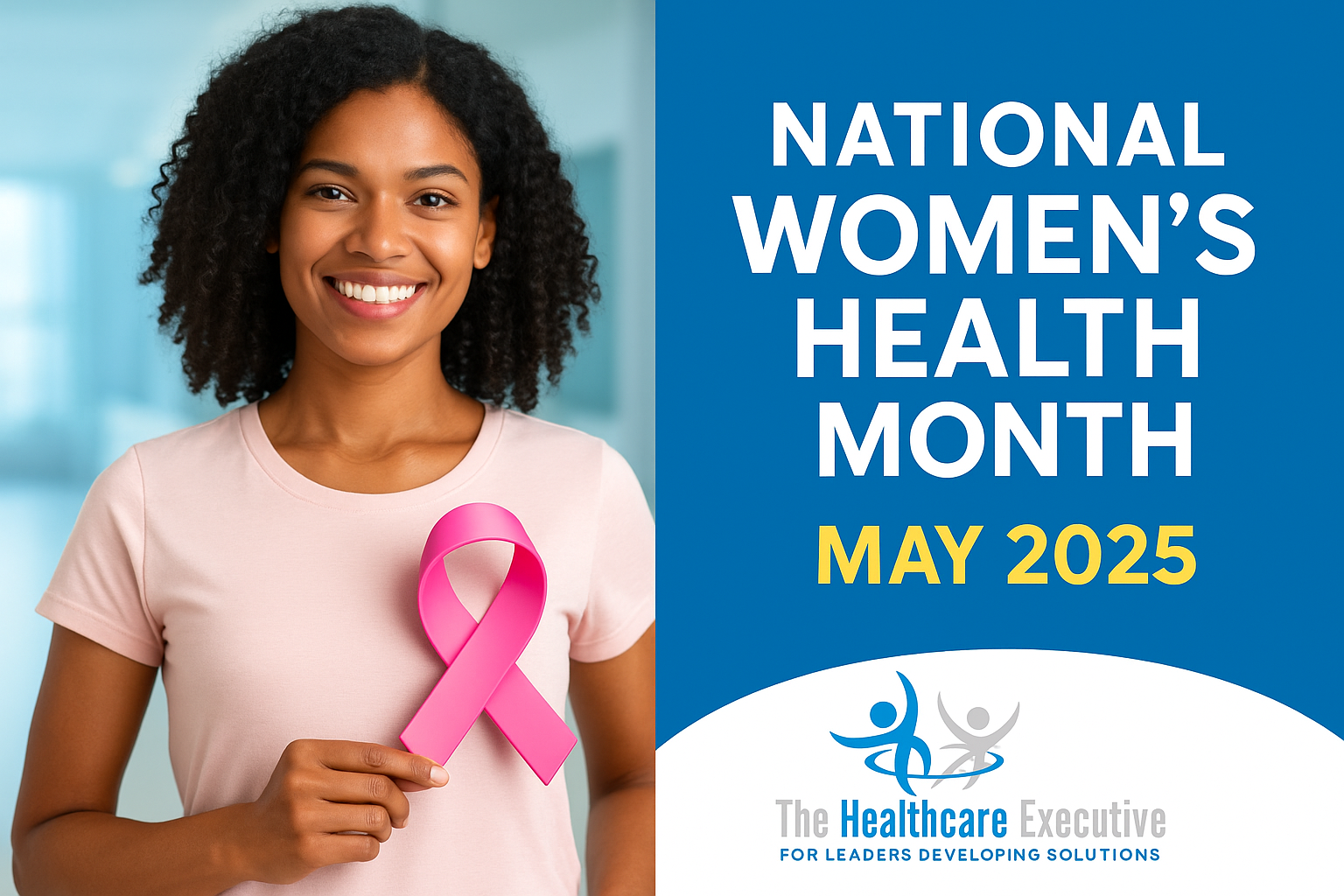National Women’s Health Month – May 2025 | Executive Leadership in Equitable Care

- Posted by Greg Wahlstrom, MBA, HCM
- Posted in Health Observance Calendar
Hospital Strategy for Gender Equity and Women’s Wellness
Published: May 13, 2025
Each May, National Women’s Health Month provides healthcare executives with a timely opportunity to realign strategy with equity, access, and long-term outcomes. Despite increased public awareness, women still face diagnostic delays, insurance gaps, and fragmented pathways in preventive and chronic care. According to the CDC Office of Women’s Health, heart disease, stroke, and cancer remain top threats—often compounded by implicit bias and systemic underdiagnosis. Hospital boards and executive teams must evaluate whether their care delivery models sufficiently reflect gender-specific needs. For example, institutions like Northwell Health have created cross-functional women’s health centers that merge OB-GYN, behavioral health, cardiovascular care, and endocrinology under a unified experience. Hospitals that invest in integrative care for women are not only meeting quality benchmarks—they’re advancing health justice. This observance should be seen not as symbolic, but as a chance to lead structural change from the C-suite outward.
Strategic leadership requires understanding how social determinants, gender bias, and workforce representation impact outcomes for women at every touchpoint. Too often, women—especially those of color—experience poorer care outcomes not because of clinical errors, but due to dismissive encounters, delayed referrals, or lack of coordinated navigation. Hospitals can reduce these disparities through community health needs assessments (CHNAs), equity dashboards, and real-time patient-reported outcomes measures (PROMs). Every Mother Counts and similar advocacy organizations highlight that maternal mortality in the U.S. still ranks among the highest in developed nations. That is a leadership failure, not just a clinical one. Executive officers should evaluate maternity deserts, postpartum follow-up rates, and bilingual service offerings within their systems. National Women’s Health Month is an ideal time to identify—and eliminate—these care gaps with urgency and accountability.
Digital innovation can also serve as a strategic lever when implemented with inclusivity in mind. Mobile health apps, remote monitoring tools, and telehealth platforms have enabled new access pathways for women—particularly for mental health, chronic disease, and reproductive services. However, health systems must ensure that these tools are accessible to women across racial, linguistic, and socioeconomic lines. Johns Hopkins Medicine has embedded virtual wellness visits and multilingual education content into its women’s health strategy, increasing appointment follow-through and reducing missed diagnoses. Hospital CTOs and CMIOs should review current digital health offerings for user-centered design and equitable access. Women’s Health Month is an executive checkpoint to ensure that innovation truly meets mission. When done right, technology supports—not replaces—relationship-based care models.
Hospitals must also address internal workforce equity as part of their external care delivery strategy. Women comprise nearly 80% of the healthcare workforce but remain underrepresented in hospital executive roles, boardrooms, and capital investment decisions. This lack of leadership diversity often translates to delayed prioritization of women’s care issues system-wide. Hospitals like Mass General have launched women’s health leadership tracks and mentorship cohorts to cultivate internal change. Hospital boards should review gender representation across service lines, compensation equity, and promotion pipelines. This observance is an opportunity not only to examine patient metrics but to reevaluate internal culture and leadership accountability. The goal isn’t just better outcomes—it’s systemic fairness at every level of the care continuum.
As National Women’s Health Month continues to evolve, healthcare leaders must move from awareness to execution. This means allocating budgets, updating protocols, supporting research, and amplifying lived experiences of women both inside and outside the hospital walls. Visibility must be backed by infrastructure. Executive participation in this observance—whether through policy changes, public statements, or funded pilots—sends a message to staff, communities, and patients that women’s health is a strategic priority. In closing, May 2025 offers more than a calendar milestone. It presents a measurable leadership opportunity. Hospitals that act now will not only serve women better today but redefine equity in American healthcare tomorrow.
Discover More
Looking to strengthen your hospital’s gender equity strategy? Review more observances and hospital board strategies at The Healthcare Executive.
Internal Links
- The Healthcare Workforce Crisis: Executive Solutions That Actually Work
- Rebuilding Trust in U.S. Healthcare: A Leadership Blueprint



